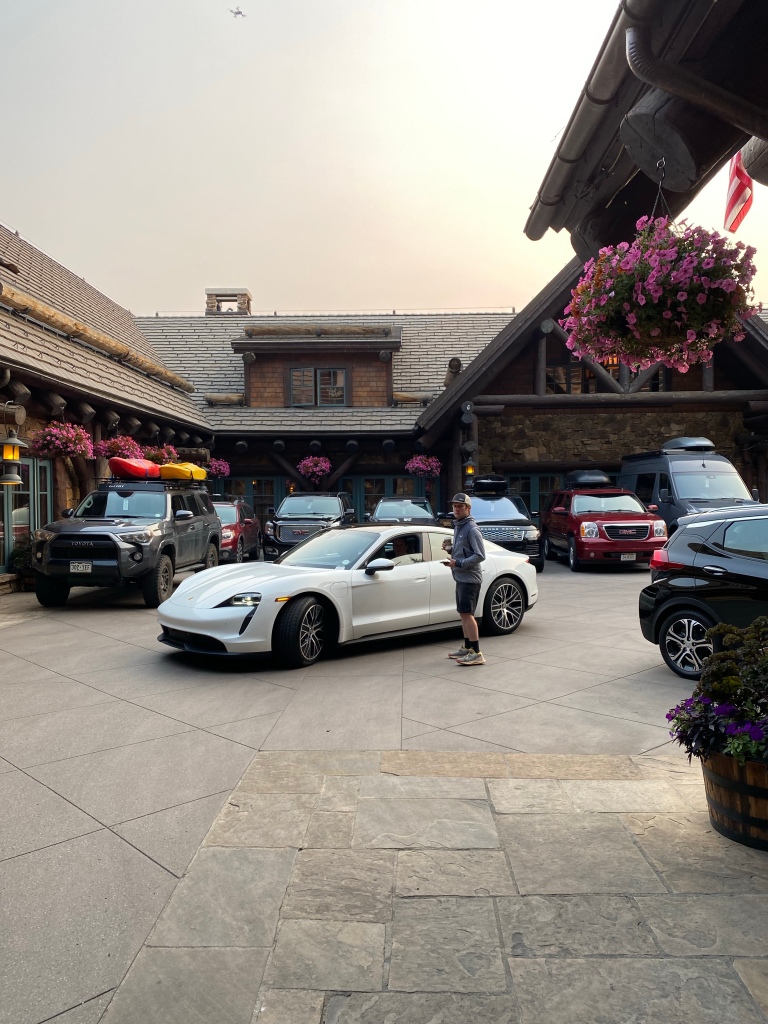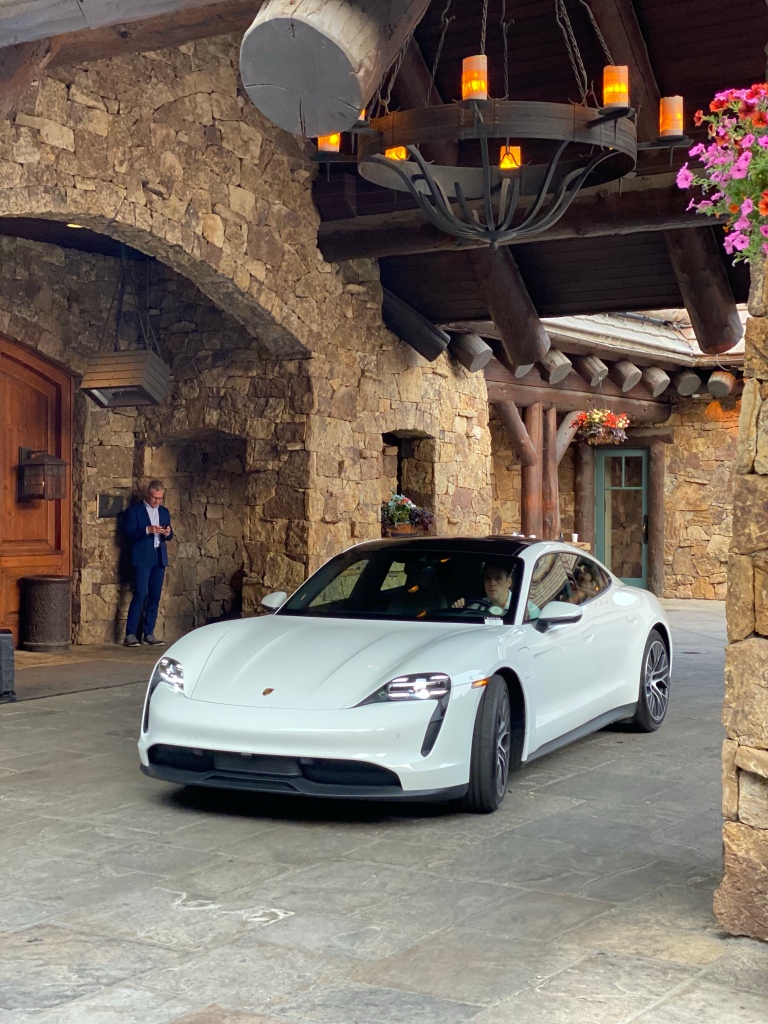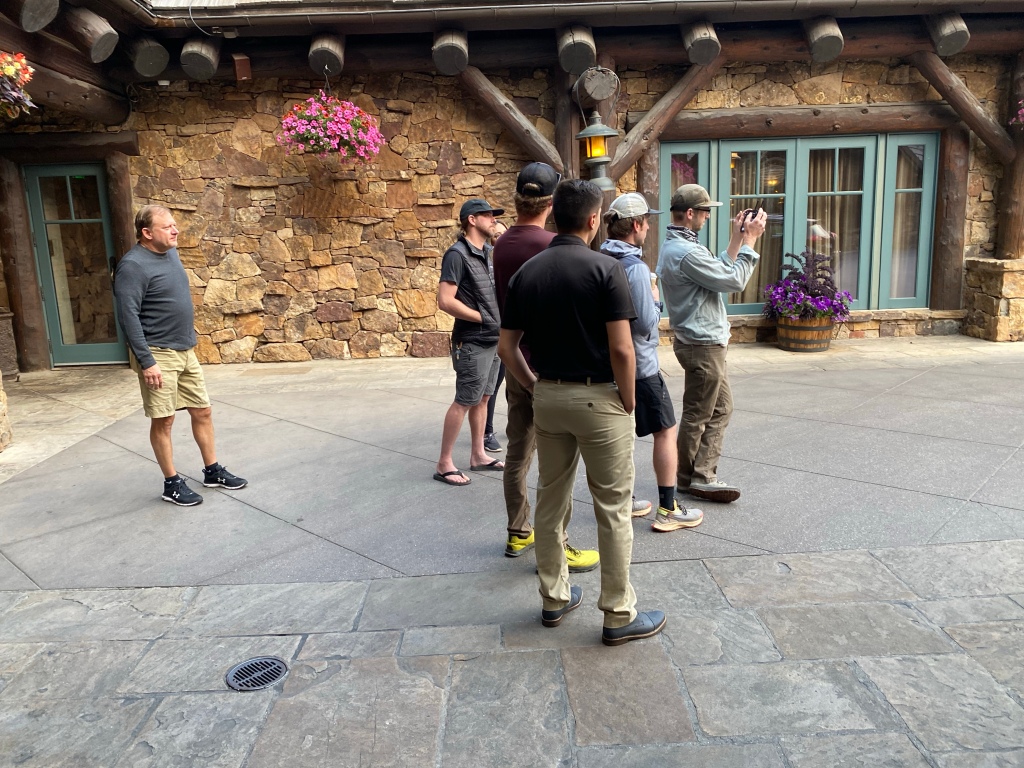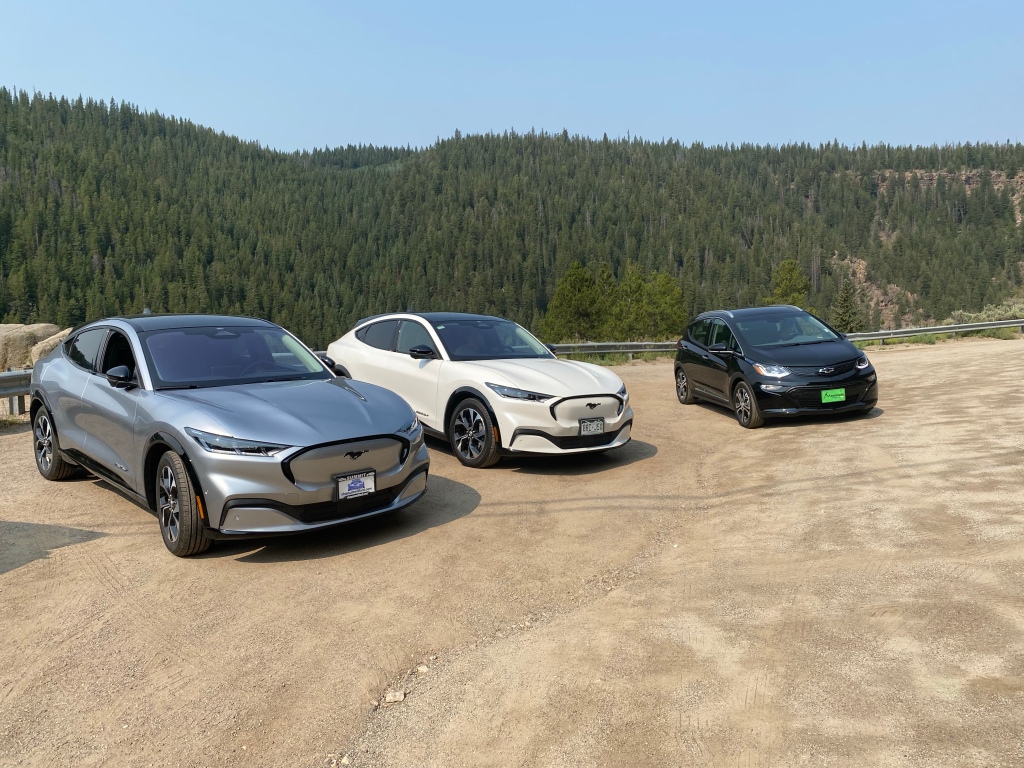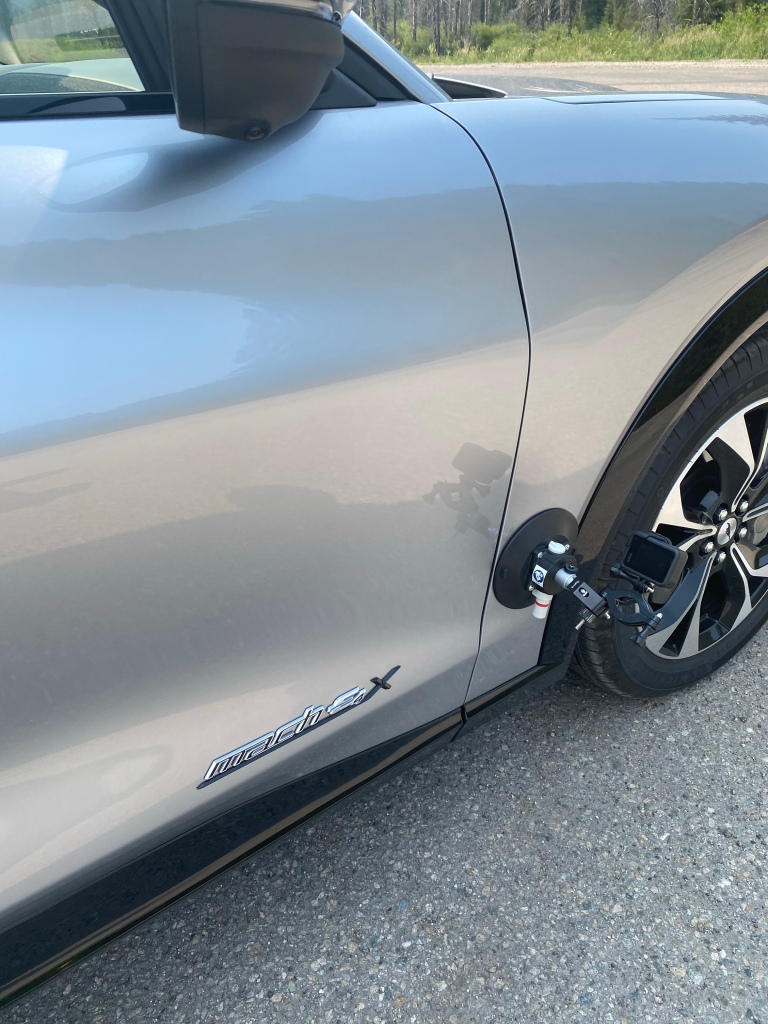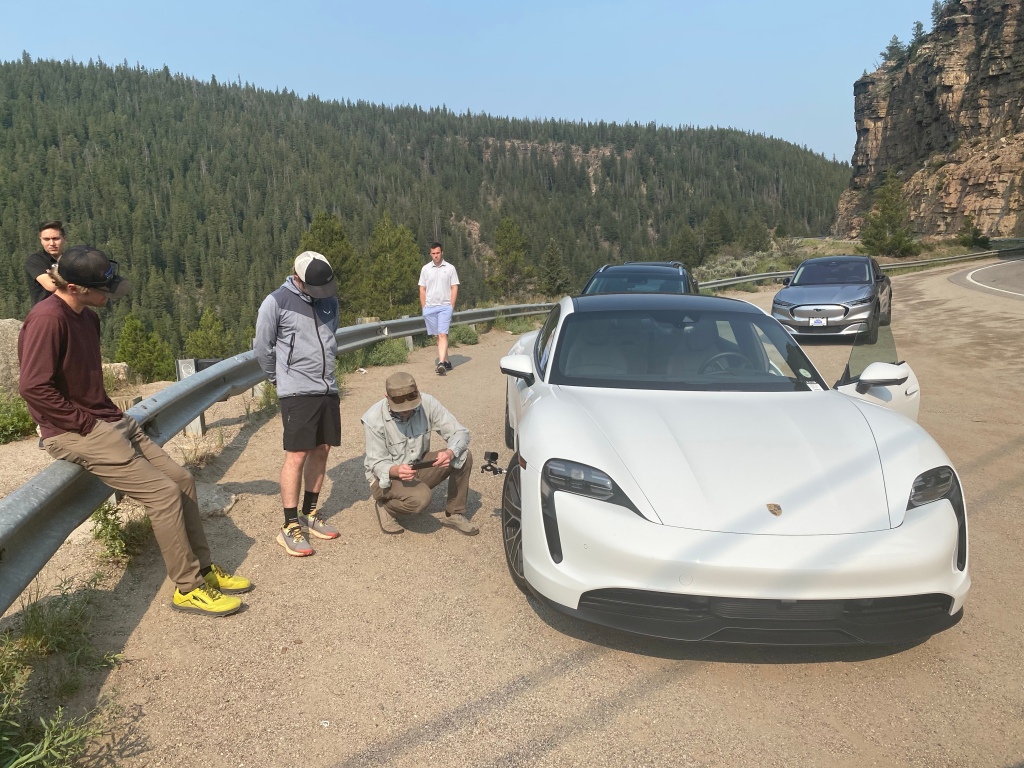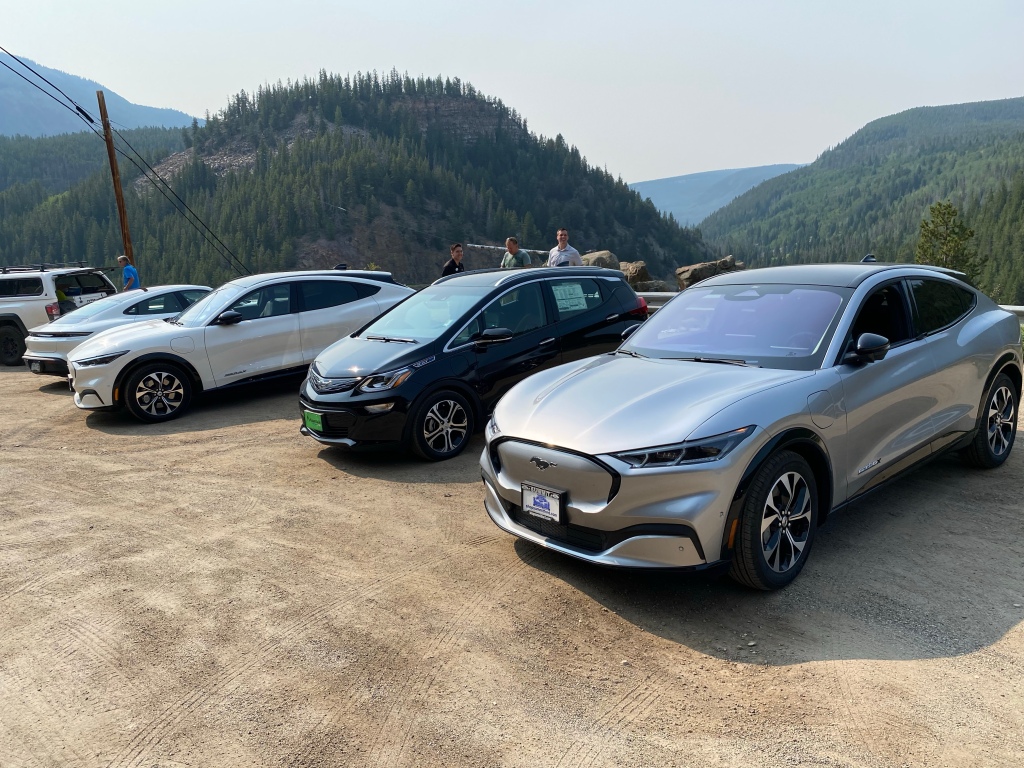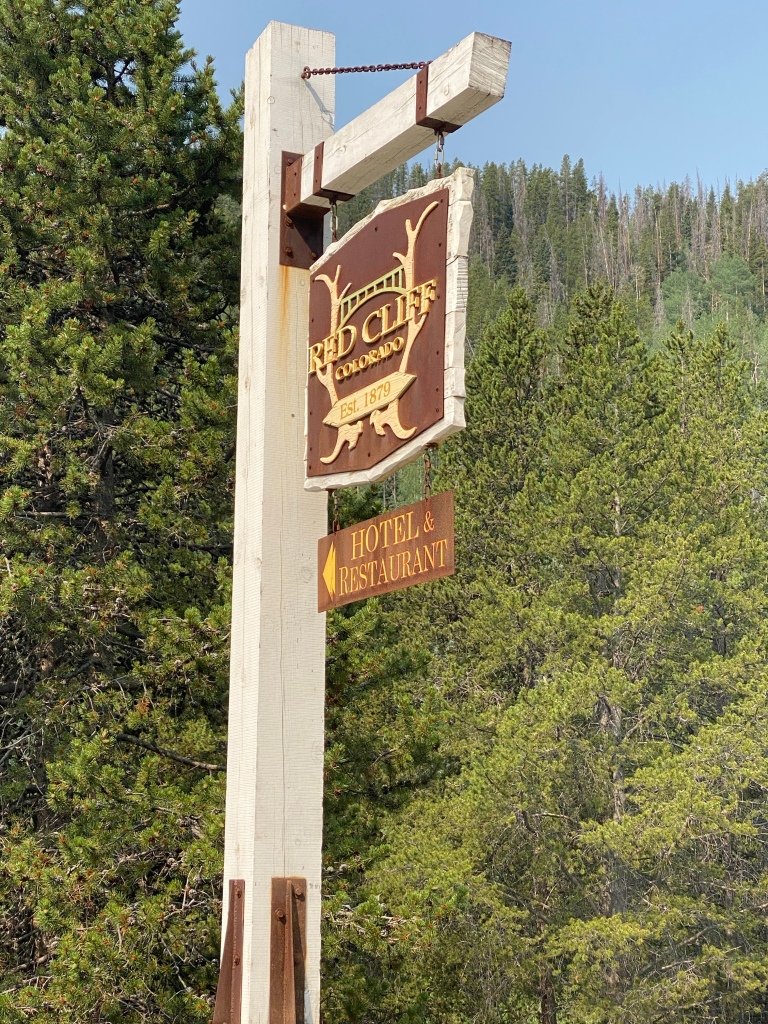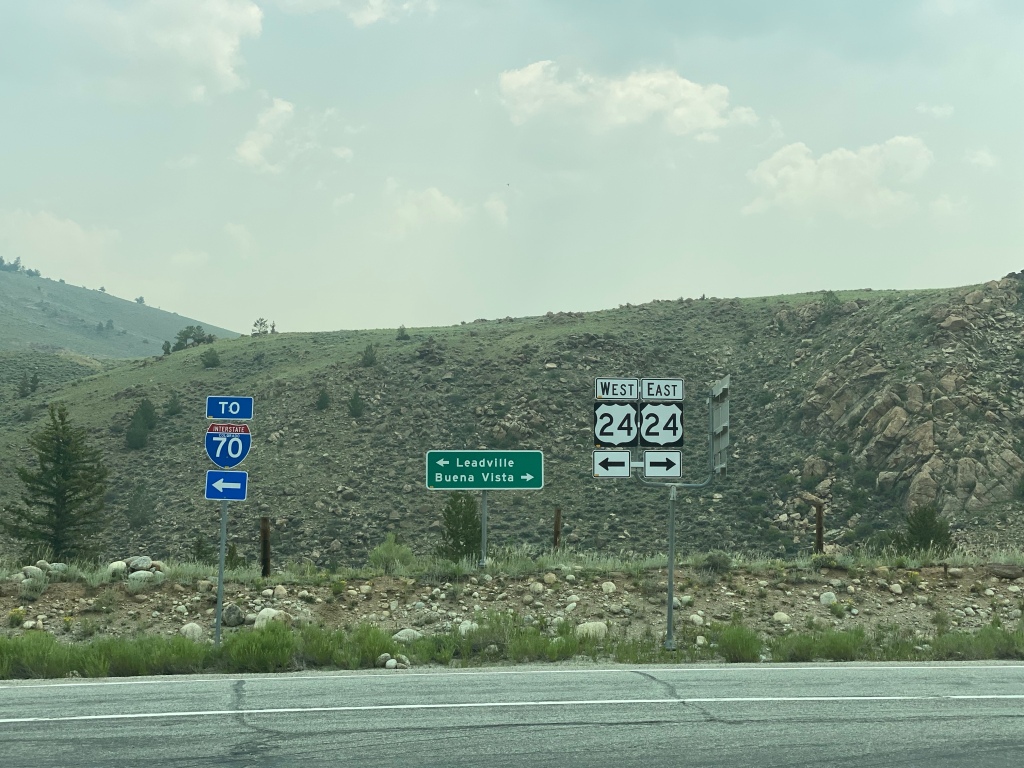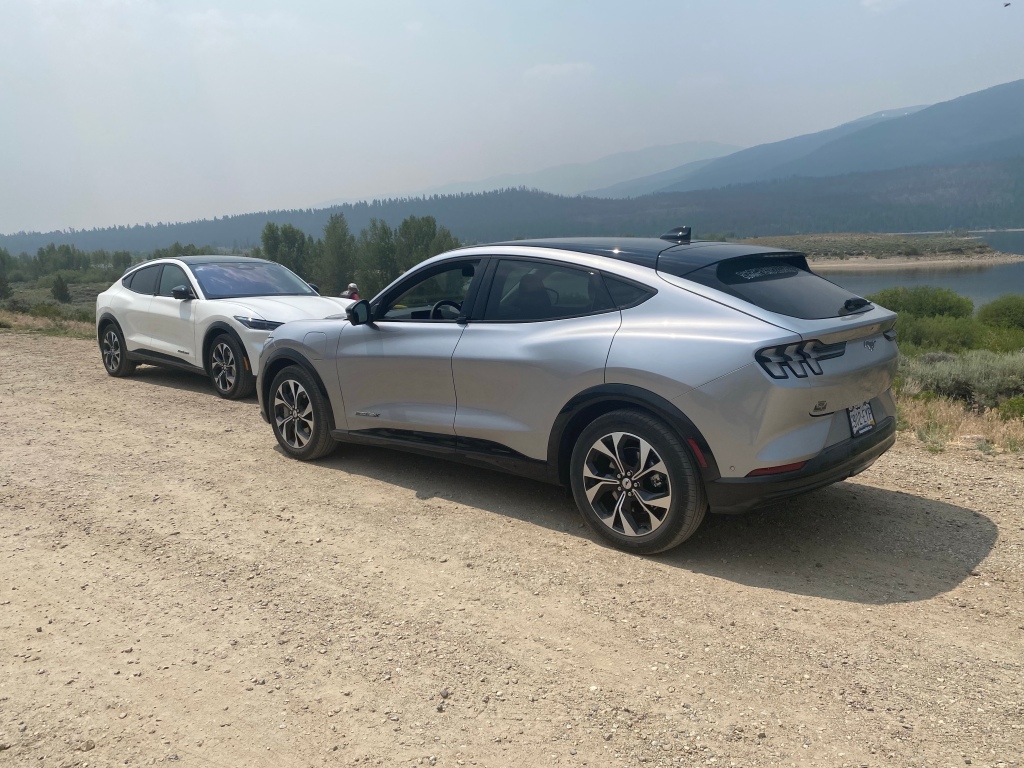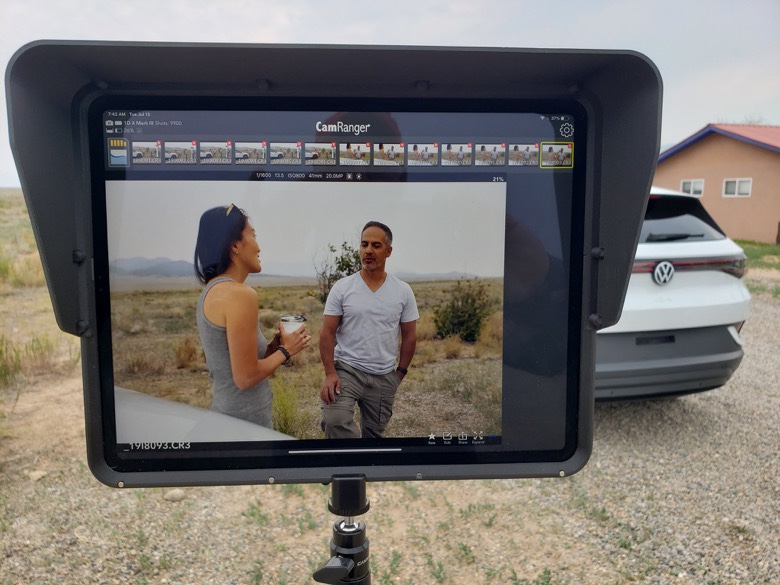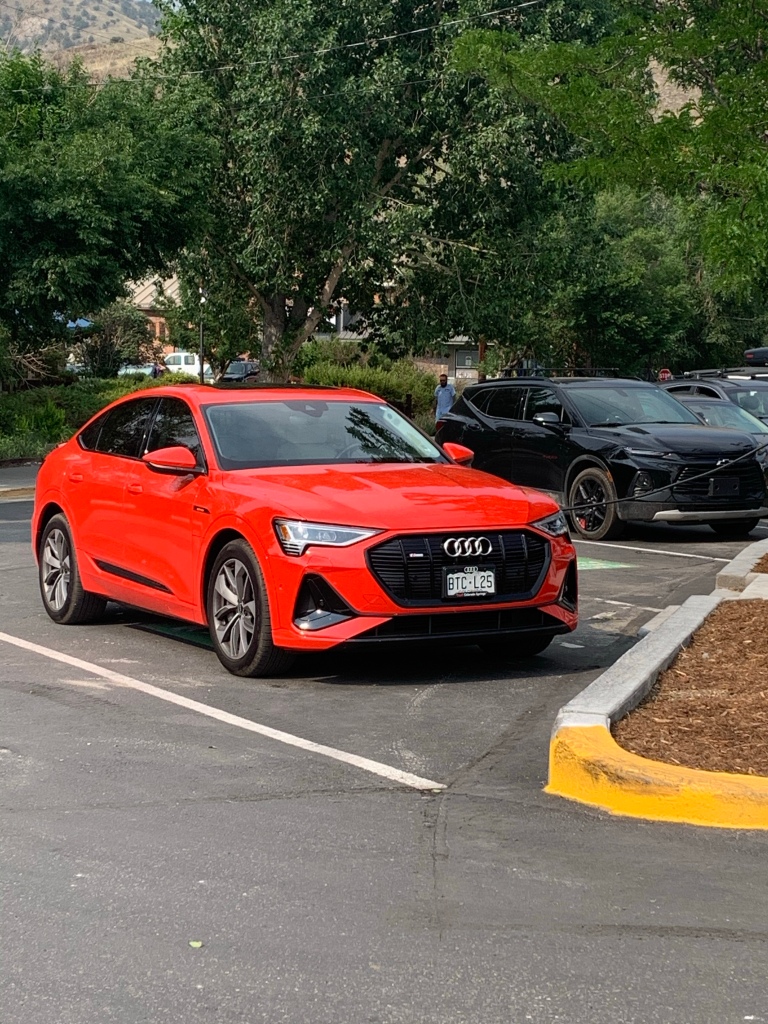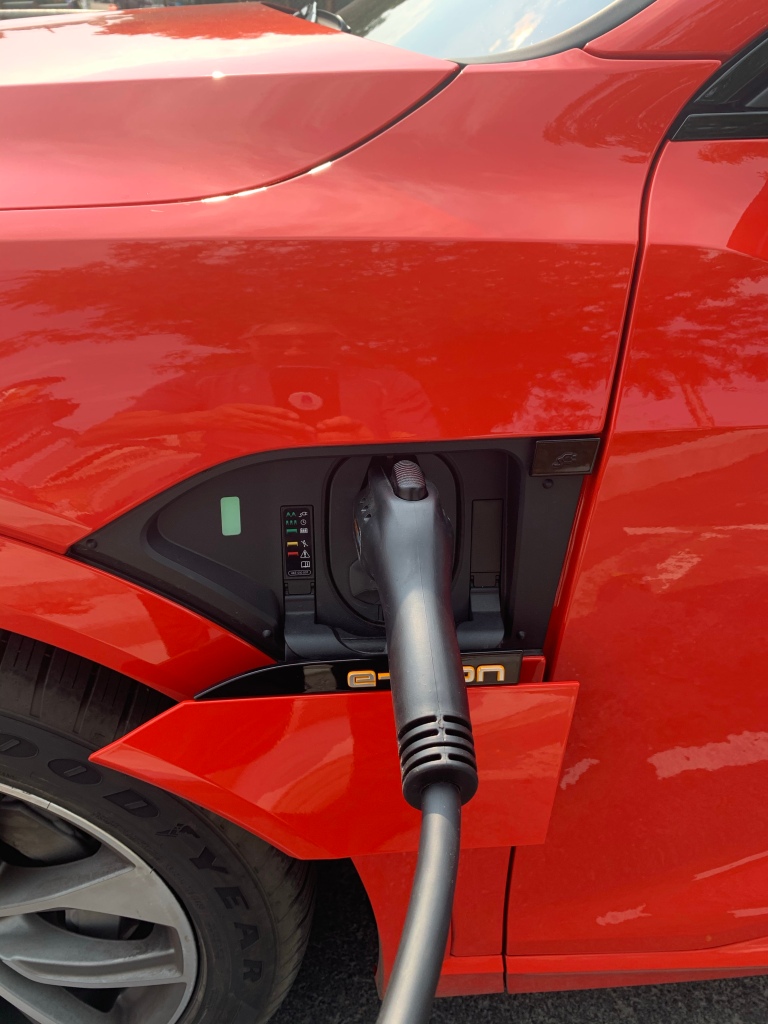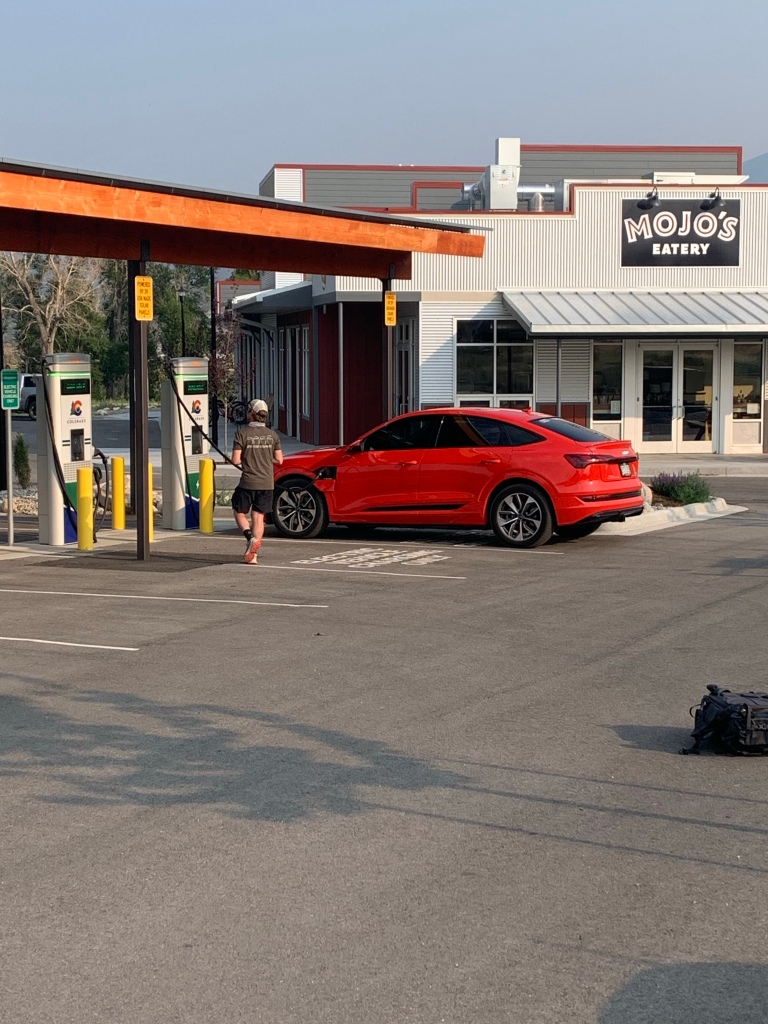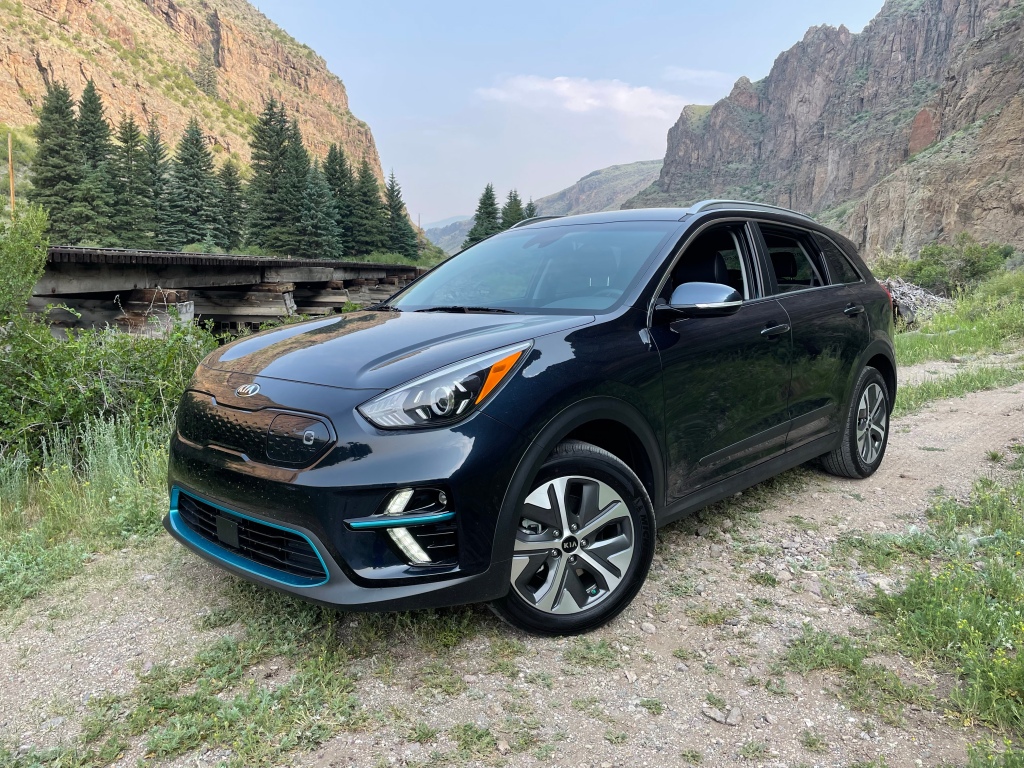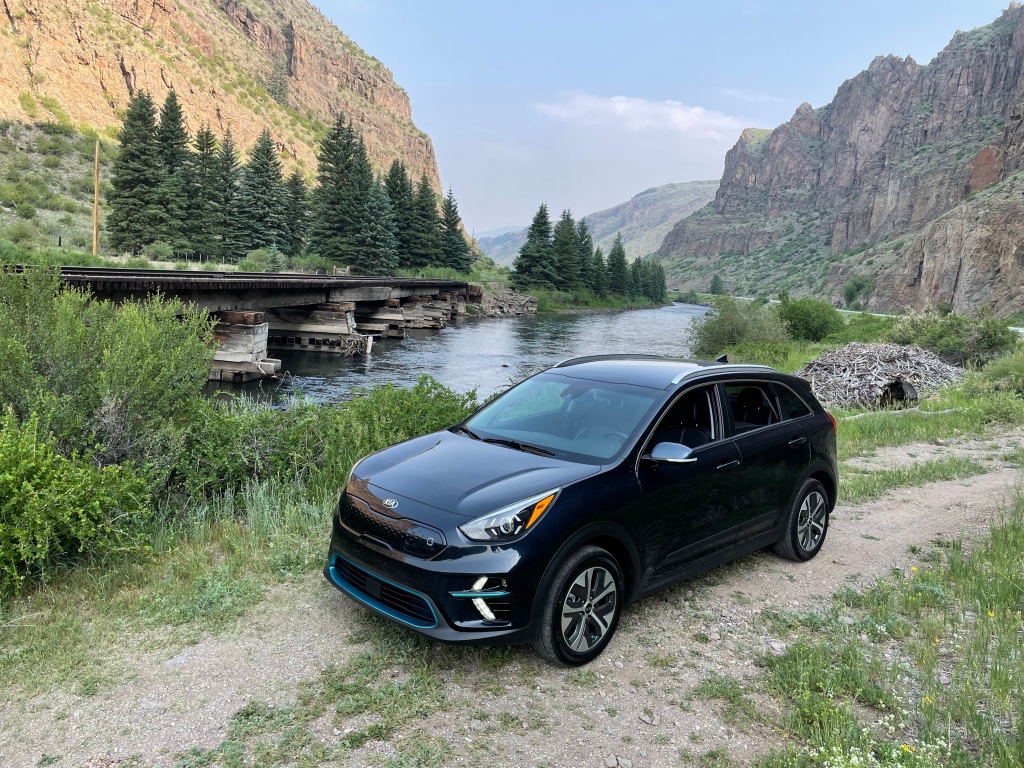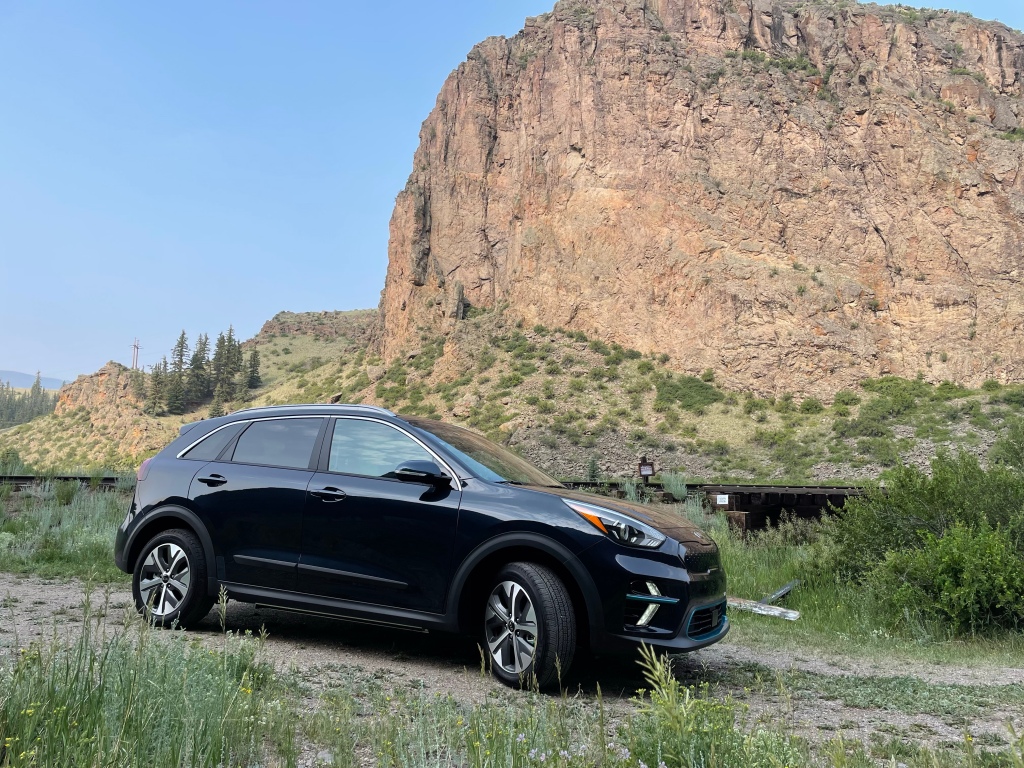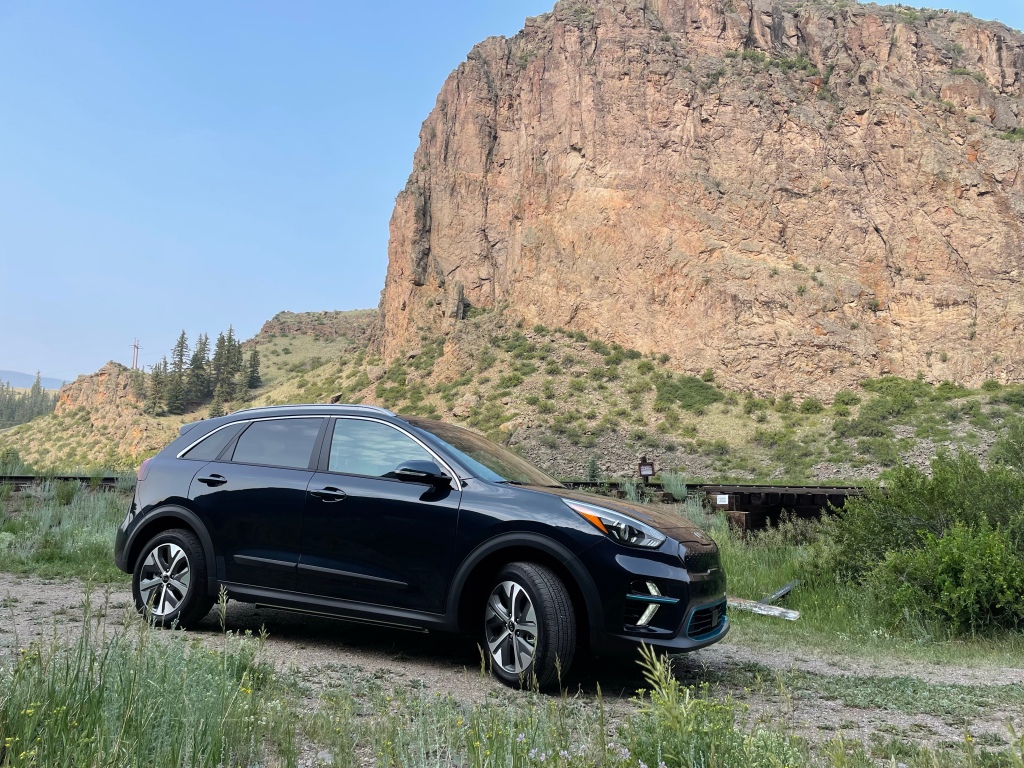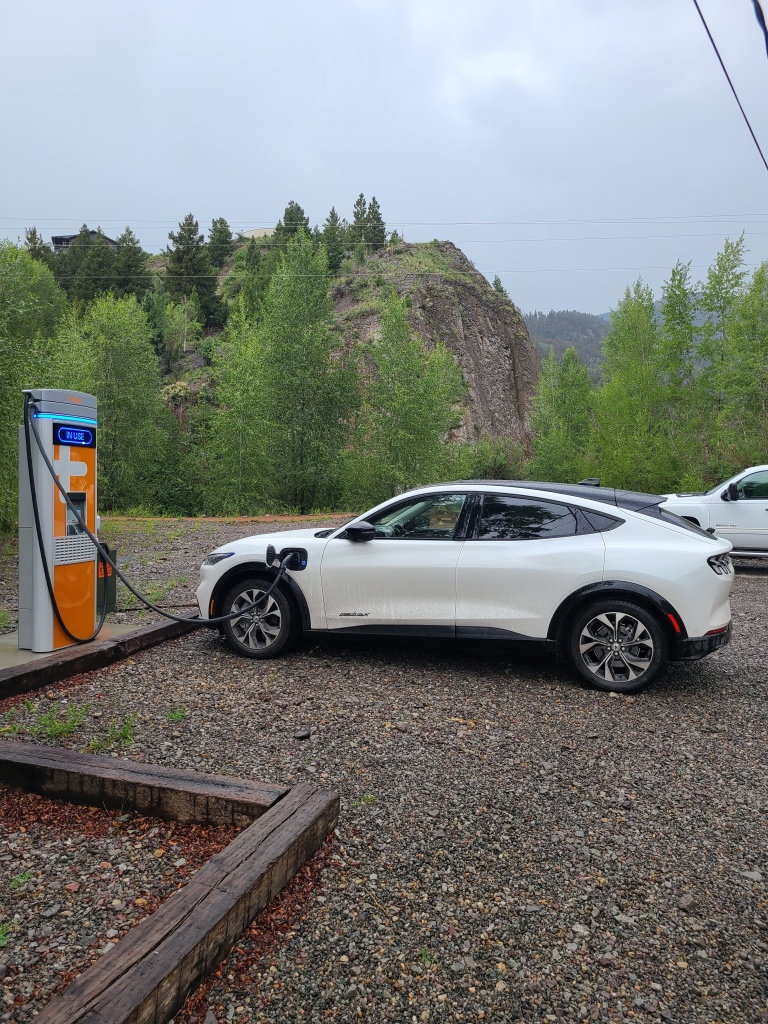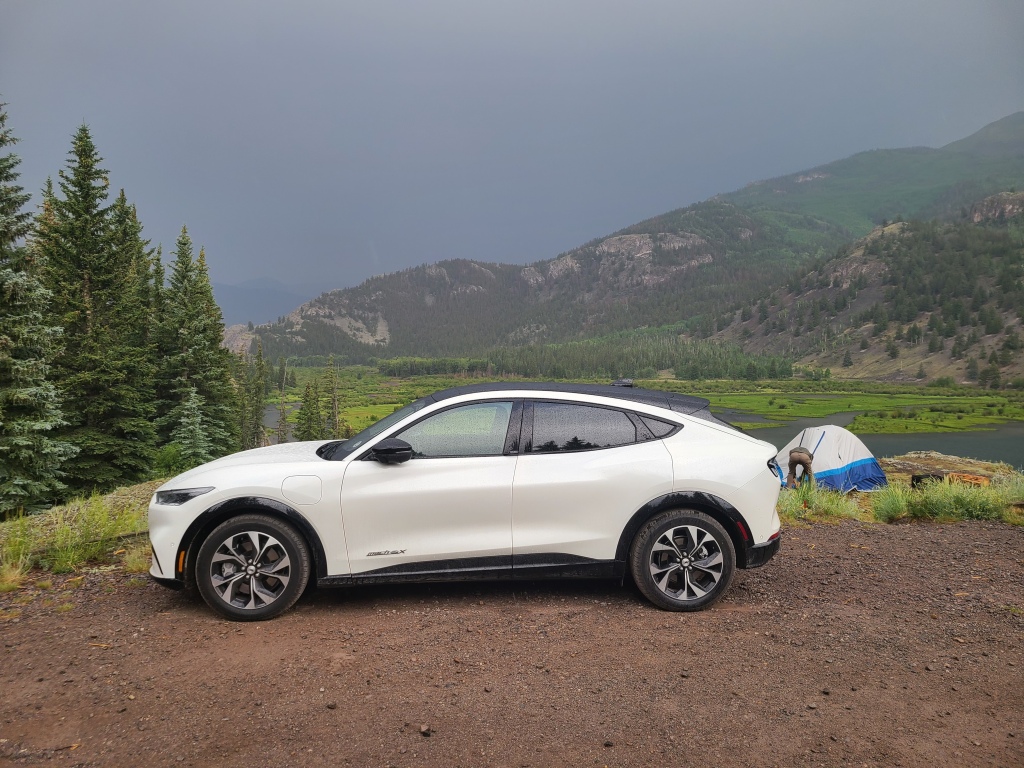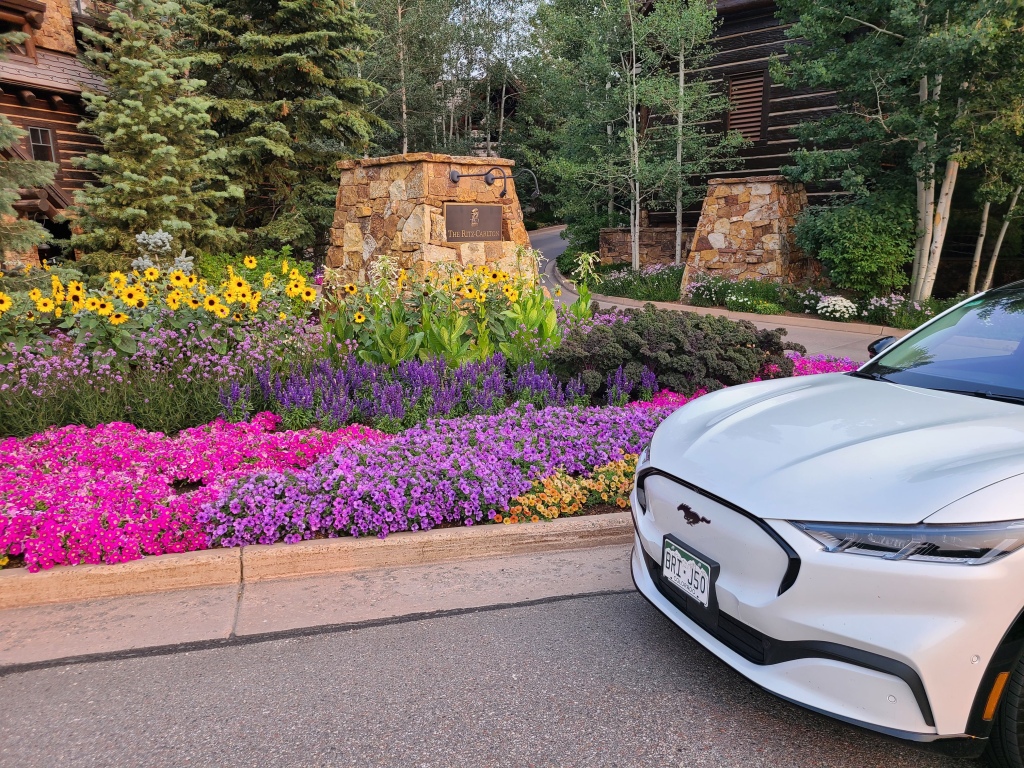Whether by choice or by necessity, traveling, sleeping and even living fulltime in vans has become part of the fabric of American life. Social media abounds with stories and photos. The Instagram hashtag #vanlife has accumulated more than 12 million posts. A quick search on the Internet turns up websites devoted to the lifestyle: Projectvanlife.com, gnomadhome.com, Kombilife.com, faroutride.com, justvanlife.com, go-van.com – and on and on. There are many apps designed to connect Van Lifers with advice, campsite locations and each other.
Van life in the United States encompasses a wide spectrum of Americans. There are impoverished retirees and young people fleeing the lack of affordable housing and who live in used vans they’ve converted themselves. But there’s also been a boom in new and newer Mercedes-Benz Sprinters, Ford Transits and RAM ProMasters that can be seen on highways returning from weekend recreational jaunts or longer vacations.
The recreational vehicle industry has enjoyed a couple of very good years, more than partly due to the COVID-19 pandemic. The Recreational Vehicle Industry Association (RVIA) reports that in 2021 manufacturers shipped more than 600,000 RVs of all types, including towables – trailers, popups and fifthwheels. Motorhome sales in 2021 increased by 37.8 percent but by far the fastest growing segment was Class B campervans, which increased 91.5 percent year over year.
Colorado Is a Van Life Hotspot
Not surprisingly, Colorado’s scenic wonders and outdoor activities have made it a natural
Van Life hotspot both for consumers and van producers. A 2018 survey of 725 “van lifers” by online publication Outbound Living, ranked Colorado #2, behind California among van life states.
A more recent survey by the Recreational Vehicle Industry Association (RVIA) looked at Class B campervan demographics, which – much like Colorado’s – trend younger: Young families accounted for 42 percent, millennials and Gen-Z accounted for 45 percent. Two-thirds are male and more than half have no children at home. They like outdoor sports (44 percent), fishing (32 percent) and water recreation (32 percent). Their motivation for owning a campervan, according to the RVIA survey, include “maintaining control over one’s own itinerary, spending time outdoors, and visiting a location with natural beauty.”
The younger cohort of van lifers may think they’ve stumbled on to something new and different and romantic – whether they’re in a DIY rig or a tricked-out campervan. Looking at some of the photos on van life Instagram and Facebook pages exhibits some of the romance and adventure they feel as they are able to pursue remote employment while shifting their location from ocean to mountains to desert and back. But van life can actually be traced back years – even centuries.
A Short History of Vans
Arguably, van life began with the Romani (‘gypsies’). There are accounts beginning in Medieval times that these nomads traveled throughout Europe in horse-drawn wagons. A 14th century monk wrote that they “rarely or never stop in one place for more than 30 days.” They were persecuted wherever they went.
Motorized campervans made their American debut early in the 20th century. The 1910 Pierce-Arrow Touring Landau with a fold-down bed and sink was displayed at the Madison Square Garden auto show. And “The Vagabonds” – Thomas Edison, Henry Ford, John Burroughs and Harvey Firestone – outfitted a Lincoln truck for annual camping trips between 1913-1924.
Fast forward to 1950. Volkswagen began producing a box on the chassis of its Beetle, the Type 2. The VW Microbus was useful as a commercial vehicle, but people almost immediately saw that the interior could be adapted for other uses, including camping. Volkswagen partnered with Westfalia to produce conversion kits, and by 1956 the VW Westfalia camper had come to America. Though low on horsepower, it was high on appeal, and it became a symbol of a culture outside the mainstream of American life, earning the nickname “hippie bus,” although plenty of non-hippies saw its attraction, as well. Many are still in use today.
Volkswagen discontinued the Microbus in 2014, but has announced an all-electric version, the ID. Buzz, that it plans to introduce for the 2024 model year.
American-made commercial vans had more power and room than the VW, and adapted well to camping. Tricked out with beds, carpet and often stoves and refrigerators, they continued to acquire fancier accessories like mood lighting and sound systems, more luxurious seating and sleeping arrangements and distinctive paint jobs. Many of these are still on the road, as well.
A Happy Medium: The Class B Campervan
Over the years, the term “recreational vehicle” (RV) has embraced everything from buses to semi-trailer trucks that have been converted into homes on wheels (Class A) to motorhomes with a bed over the cab and conveniences like built in showers and toilets (Class C). In between is the Class B van, which has gained huge popularity in the last few years because it is large enough to accommodate multiple beds and other amenities, but smaller, more efficient and easily maneuverable.
The Class B campervan was developed beginning in the mid ‘70s in Canada, by Roadtrek and Pleasure-Way. According to Phil Ingrassia, president of the Recreational Vehicles Dealers Association (RVDA). “They kept the flame alive by outfitting vans into real RVs, with kitchens, bathrooms and sleeping that were above and beyond what the early van campers could’ve imagined.” But it was Mercedes-Benz and its Sprinter that made it possible for an adult to stand up inside.
Sprinters brought more height and a narrower wheelbase to the industry and gradually, the Mercedes-Benz “Eurovan” silhouette has become the U.S. standard. Ford brought its Transit stateside, and RAM (part of Stellantis, formerly Fiat-Chrysler) modified its existing vans to European-style standards, dubbed the ProMaster. These three brands dominate the Class B market.
There are familiar names RV industry giants like Winnebago and Airstream that build far-from-basic campervans based on Sprinters and ProMasters. There are also scores of smaller van conversion companies. Many of them will advise and sell van parts and accessories to DIYers, like solar panels and additional water storage, but their business primarily is building and selling completed units or converting van shells that clients have acquired and brought to them for conversion.
Colorado Campervan Entrepreneurs
Matt Felser, co-owner of Dave & Matt Campervans, and Eric Miller, co-owner of Tourig, could be considered poster boys for van life. They are van enthusiasts, Colorado-based van converters who have lived full or part-time in their Class B campervans.
Matt and his partner, Dave Ramsay are living the van life dream. They own a successful van conversion business based in Gypsum, Colorado. The partners graduated from Williams College and went their separate ways – Dave to a hedge fund in New York and Matt to being a ski bum. Eventually, Dave quit finance, converted his first van, and then started a small van rental company.
Matt lived in Tahoe City, California before migrating to Vail, where he taught Spanish. “I was exploring my next vehicle to bike and ski outside of school,” he said. In 2016-17, “The only way to get a campervan was to get a Winnebago or Roadtrek or get a custom van for nearly $100,000. Not doable…I had people who talked me into I could do this myself.” He found a used ProMaster in Texas, “watched about a thousand YouTube videos, everything from flooring to electrical to even how to use power tools.” Dave arrived and about four months later, the “labor of love” was finished.
They took it throughout the U.S. in 2018. “The turning moment was the amount of people on the trip who wanted to check it out,” Matt said. They reasoned that if Matt could do it on a teacher’s budget, it was a viable business concept. Purchasing used vans and converting them, “We sold the one, then two, then four. We brought on some friends and now have built 350-plus in the last three years,” Matt says.
Dave and Matt Campervans works mostly on RAM ProMasters; they are licensed RAM dealers, which allows them better access to inventory, although during the pandemic of the 190 orders they placed they only received 19. Matt says the ProMaster’s front-wheel drive was important for better handling in adverse conditions. It’s reliable. It also has the most interior space. They are exploring diversifying into Ford Transits.
From the beginning, their model has been to “provide everything you need and nothing you don’t.” It makes it possible for them to keep their prices lower while offering maximum design flexibility to their clients.
The company has just bought a new 39,000-square-foot facility in Rifle and, once the vehicles start flowing again, their goal is to build 1,600 vans by the end of 2024. “We want to be the largest private manufacturer of RVs in the country and we’re proud to do it in the state of Colorado,” Matt says.
Dave and Matt offers 10 customization options in three different lengths. “Efficiency keeps the price-point down and keeps more people on the road. “Everything we do removes the bells and whistles and replaces them with a lot of flexibility and expansion,” Matt says. Prices range between $65,000 and $76,000.
“We engineer vehicles that are open enough to take in all kinds,” Matt says. “Most sales are to millennials, followed by Boomers. The most interest across social media is Gen Z. The most prominent in the industry as a whole are Gen Xers. … It’s really cool to see if it’s a millennial entrepreneurial-minded and lives full or part time in the vehicle or a Boomer who wants to see the country of a Gen Z – a lot of grad students who want to reduce their overhead and don’t want to live in a dorm anymore.”
As for Dave and Matt, they’ve both lived full-time in vans. Dave still does when he’s in Gypsum, although he keeps an apartment in Denver. Matt Felser’s van has been his only vehicle for the last four years. He lived in it full-time for two summers and “still uses it as much as I can.”
The High End of Van Life
Tourig, based in Golden, Colorado, is at the other end of the price – and luxury – scale. Co-founder and CEO Eric Miller, says the idea for Tourig grew out of his job as a traveling sales rep in the outdoor industry. “I was spending a lot of nights in hotels and in tents and thought there’s got to be a more efficient way to do this.” Before his daughter was born in 2009 Eric spent 150 nights a year for eight years in one of two vans he and a partner converted. “It was fun to watch people’s eyes light up when I would pull in and get out with my dog and nobody really cared about why I was there…they cared about the van and the dog,” Miller says.
The idea kept percolating but it wasn’t until 2014 that Eric thought it was time to start a business. He called his partner, Paul Bulger, an experienced marine outfitter and skillful carpenter. “Coming from the sailing background he understood what it was like to travel in a confined space … it’s the best part of what made us what we are today because of his quality and attention to detail,” Eric says.
In 2015 they build their first van in a 1,000-square-foot building in Nederland, Colorado. The business took off. According to Eric, “All of a sudden the phone rang and somebody said they wanted one too. Then it rang again and before you knew it, we had people lined up and needed to hire some staff and off we went.” The first year it was just two men converting two vans. The second year it was 10-12 vans. Tourig’s business model now calls for about 50 per year. “It allows us to really manage our supply chain, keep quality consistent and always elevated, and it makes it exclusive,” Eric says. Exclusive means prices range between $225,000 and $300,000 for a finished new Mercedes-Benz Sprinter.
Tourig works exclusively on Sprinters, and the company has a dealership license that allows them to source new Sprinters directly from the manufacturer or sell used. Tourig branched into Ford Transits in 2021 because Ford can produce and deliver vehicles that can be serviced at thousands of dealers across the country. There are far fewer dealers who can work on a Sprinter. That is partly why Tourig has doubled its space to include a service facility where they can work on vans, not necessarily Tourig-built vans. It also provides more production capacity.
A full van conversion takes Tourig about six weeks to complete. That includes about four weeks of production time plus two weeks of quality control and final detail. “We’re different from an RV company. They don’t produce at our level. A Class B RV retails for $180,000 and they might produce 30 a week. Our guys are artisans. They’re craftsmen and it’s never enough, sometimes to our detriment,” Eric says.
While Tourig produces on the high end, Eric has respect for what more mass-market manufacturers offer. “I think the RV companies do an amazing job of giving people a lot of stuff for a compelling price. What we provide is an experience.” The Tourig experience clearly must be worth waiting for, since they have clients waiting and delivery is 12-14 months in the future.
As far as the Tourig client? “We cater to 40-45 at the low end – family, established, job, means to afford. We’re seeing a lot of people in their 60s and 70s who a few years would have went to a Winnebago or Airstream because that’s what you know. Now those people are saying, ‘hey! I still want to be cool. I want to be relevant and out there…Why should I settle for a mas-produced product?’” Eric says.
“Hard to explain to somebody how it changes your life because unlike a tow-behind camper or a big RV, vans have an attraction to people. Go back to the ‘60s, right? Vans were cool. Now they’ve become so sophisticated and luxurious that anybody can participate. Anybody from the people who are just getting started in van life up to vans that are doctors and lawyers who have a little more discretionary income.”
Eric agrees the pandemic has contributed to the expansion of the business, but says he started to see an uptick in the industry in 2018. He couldn’t afford a manufactured van when he first wanted one, so he built his own. “Now today there are 200 companies in our little niche if you just talk about one guy in a shop to 100 guys in the back. We’re in-between that with about 40.” And that’s just in the last three to four years.
Eric Miller has owned 10 vans over the years and his current Sprinter – his daily vehicle – is his favorite. “Had a successful career and a good life – all things essential to the American Dream. I’m happiest with my van, and whatever I can fit into it going down the road.”
At the other end of the spectrum from the boutique upfitters is Summit Bodyworks, a subset of Transwest Automotive Group, a Colorado-based dealer for new and used RVs, trucks and trailers. Summit upfits commercial vehicles for its national clientele. Need a bookmobile or bloodmobile? Summit Bodyworks is the place to go. Although Transwest already sold several mass-produced RV brands, Summit jumped into upfitting Class B campervans in 2019, even before Covid juiced the market.
“We upfit all other vehicles, so why not make that bridge? The Class B market is out of control and continues to rise,” says Summit’s CEO, Meredith Lyons. She believes Summit’s Antero brand of Class B vans will continue to prosper, even once the pandemic is officially over. “The world has taken a different look for how to vacation,” she says. “Once people see that they can sleep in their own sheets and have their own things, they see it’s a nice way to travel.”
Lyons says some of her customers already own large RVs and some who use their vans as a hybrid: part RV and part commuter vehicle. “People hauling kids around. Skiers who can get dressed without hauling everything into the lodge and don’t have go through the lunch line.” She had one doctor who would sleep in it and could even meet patients in it.
Working out of two buildings in Ft. Lupton, Lyons’ team of 15, including the eight-employee production crew, turns out seven units a month. That’s if she can get enough Ford and Mercedes-Benz chassis. Recently, Summit has added Freightliner to its Class B chassis mix. “Last summer I still had chassis outside waiting. Now we get too close to comfort waiting – I would like to have two outside waiting [to be worked on] at all times, she says. “Supply chains are getting better but we’re a ways from saying, ‘Oh, they’re good.’”
Lyons involves her entire team in making decisions because they represent the customers and the producers and they are constantly looking at changes in models, colors and configurations, within the reduced bounds of the supplies she can get. she says. “You can’t just sit and think it won’t change. We’re always looking for a way to make it better. If you stop and rest, you’re going to get left behind.”
Who Are Van Lifers?
The van life movement – people view it in those terms – actually is less about full-time living than part-time enjoyment. In the RVIA survey, only 1.5 percent of total RVers live in their vehicles. More than a third are over 55, they are 70 percent female, and the average annual income is under $65,000. The top full-time living RV choices were trailers, fifthwheels and larger motorhomes.
Class B campervans represent only four percent of RVs, and their demographic is quite different. The average income for 65 percent is more than $65,000. Owners are more likely to be male (66 percent). The overall age breakdown is 51 percent between 18-54 (young families, millennials and Gen-Zers) and 49 percent over 55. Almost 59 percent have no children in the home.
“While the numbers are not huge, compared to other RV types, there’s a certain acceleration of the van market because it offers a lot of things for buyers: viability, flexibility and the chance to go places where you couldn’t go and stay if you didn’t have these types of vehicles,” says the RV Dealers Association’s Phil Ingrassia. And with the pandemic, people were “saying they didn’t even think of an RV until their [travel] options were limited. For some people the van camper was a perfect…also a prestige …way.
“These are not entry-level campers … They are a premium purchase for a lot of folks. But the economics of higher-end vacations are such that if you’re going to use it for a certain number of years, a lot of people are doing the trade-off and opting for vans,” Ingrassia points out.
Living the Part-time Van Life
Travis Berry is a 55-year-old Denver resident who bought a four-wheel-drive Sprinter four years ago. It’s equipped with a bed and a refrigerator. “Pretty spartan version. For my purposes it is perfect. It can get anywhere – small enough and inconspicuous. You can park it anywhere. Has the comforts I need. Kind of a mobile biking, camping, skiing headquarters,” he says. He admits he “lusted after one of those old VW campervans for years.” Travis never followed through until he saw Sprinters. “It was all of that plus – new with safety stuff and four-wheel-drive and not something I need to worry about breaking down on me,” he says.
Travis has taken his campervan around the West, driving it to Wyoming for the 2017 solar eclipse and on several bike trips around Colorado. The longest trip was the four-day Wyoming trip. What he’s found is that van owners are “a total tribe. I’m floored at the explosion of them. I wanted one for a long time and they were sort of rare but now if you go to the mountains or ski areas or to a trail, they’re all over the place.”
He admits his wife isn’t as in love with his Sprinter. “One Valentine’s Day I did get a portable toilet that hooks up to the floor, but I don’t use it much.” And he sees that he might want to upgrade in the future, “…when I’m done working or when I start to slow down and spend more time in it – getting one with more creature comforts,” including a better bathroom for his wife.
Phil Hayes went a different route. The cost to purchase a fully converted van was daunting, so he looked for a used, low-mileage Sprinter, which he found in Omaha. He worked with VanWorks in Fort Collins, Colorado after having done some prep work on the vehicle himself. “We ended up with a fully converted van for about $65,000 to $70,000, and it could have cost us twice that,” he explains.
It’s definitely a family affair. He and his wife have a 17-year-old son and a 14-year-old daughter. “It’s a little tight. Sometimes we put the kids in a tent.” His Sprinter has a bed platform and a ‘garage’ for storing gear.
“We have really enjoyed it. We might end up selling and upgrading to something nicer or use the proceeds to buy a cabin. We don’t have enough time to just drive around,” Phil says. He’s taken the Sprinter on camping trips including a mini tour of Colorado during the pandemic, to Kansas City for a Broncos game and to at least a dozen music festivals. In fact, he’s shrink-wrapped the Sprinter “like the Grateful Dead in red and white with a lightning bolt on the front.”
Beverly Razon and her husband have a 170-inch Sprinter. “We’d been wanting to buy and looking to van experiences – probably around 2019 before the whole COVID thing and didn’t pull the trigger,” she says. Other expenses and a desire to do some international travel for their family got in the way. A road trip to the Northwest in a regular RV persuaded Beverly and her husband that a purchase would be worthwhile. “The kids loved it, the dogs loved it.”
They had to go to Kansas to find their Sprinter and used an outfitter in Salt Lake City because the demand for custom vans in Colorado was so great. With two children, now eight and 10, they needed four seats, two beds, a kitchen, and space for some gear and their aging dog.
The Razon’s Sprinter has been on some long hauls in the year they’ve owned it. With family on the East Coast and fears about flying during the pandemic, it made travel possible. They’ve visited national parks, caravanning with some neighbors. “We didn’t have to go in anywhere except restrooms along the way,” Beverly enthuses. The ability to fix all their meals is a plus. “It gave us flexibility to adapt to any situation and do any excursion. We also enjoyed the fact that the kids have space.”
Their Sprinter included an extra water tank that allows them to hook up an outside shower and clean off dirty gear before stowing it. They haven’t purchased a toilet, but it’s in the works. “We don’t want to pamper the kids that much,” she jokes.
Having the ability to work while on the road also has been a game-changer, Beverly acknowledges. “To me, it’s checked so many boxes about being able to travel and have the comfort of our own personal space.”
Beverly is no stranger to van life. Growing up, her family had a conversion van and went through the Grand Tetons, southern Oregon, the California redwoods and coastline. She says, “You either love it or you hate it…Mostly it’s about creating memories and experiences that we may not otherwise have.”
The Future Is Just Over the Next Hill
When the RV industry is looking at the future, just like the rest of motorized transportation, it looks electrified. Many vans are already equipped with solar panels for heat and light. Full electrification is coming fast.
“It’s almost a given that the van campers will be the first [recreational] vehicles that are run on an electric chassis,” Ingrassia says. He’s hearing that from the largest manufacturers like Winnebago, which has already unveiled its e-RV concept vehicle with a 125-mile range that can charge “almost anywhere” in 45 minutes. According to Winnebago’s Director of Advance Technology Jamie Sorenson, the e-RV is “a new solution for people to explore the outdoors with a small environmental impact.”
Looking down the road, Ingrassia thinks the future looks very bright. “There’s a lot of potential for the van market, especially as people take a look at the features these newer vans have. A whole new contingent of people interested in EV vans will be leading.”

